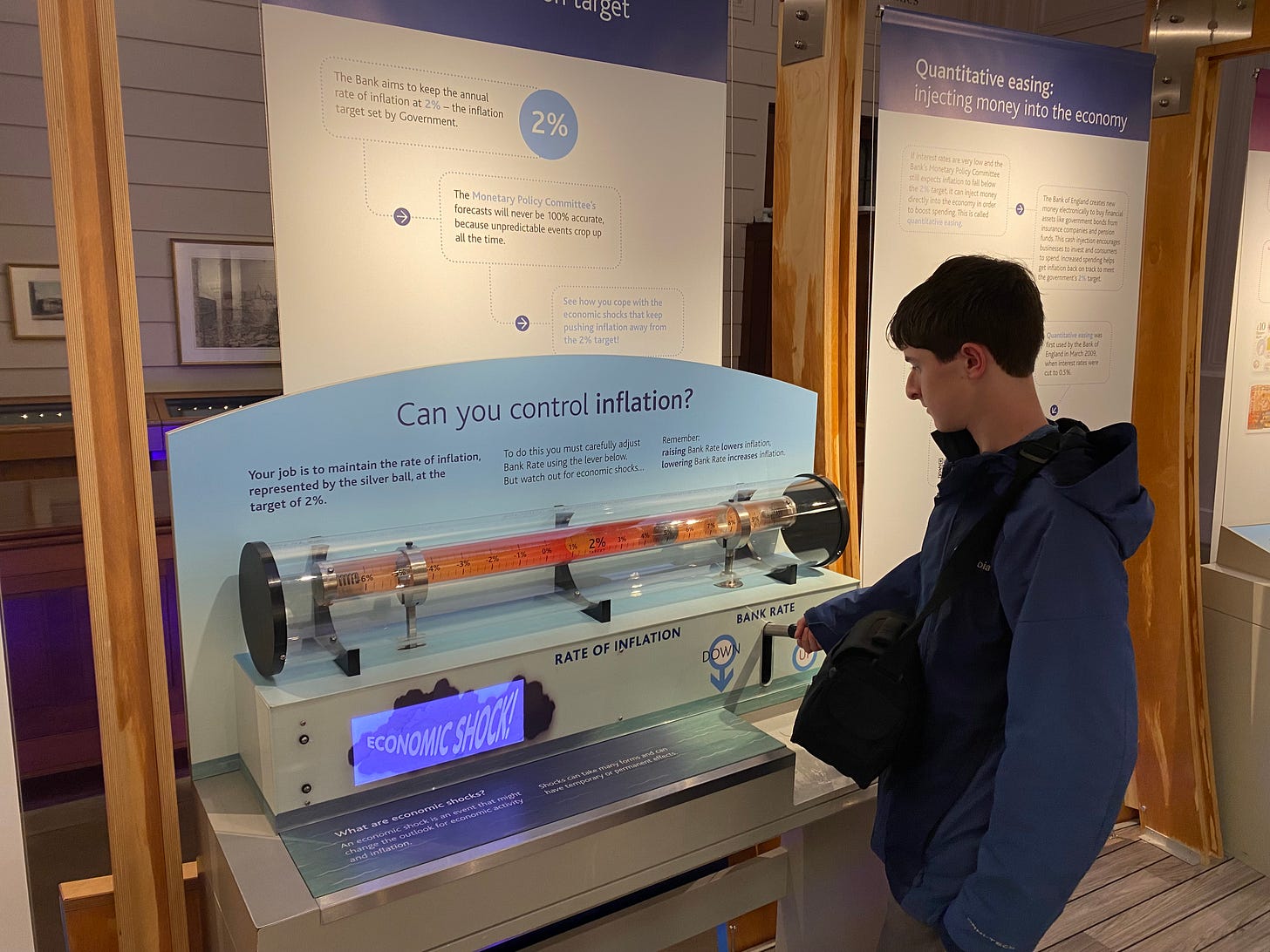Why Monetary Tightening is Both Necessary and Frightening
A Soft Landing is Unlikely
“You cannot end inflation (i) if you don’t agree on how to do it, (ii) if you and the public think it is less costly to let it continue, and (iii) if you are overly influenced by politics.”1
Allen H. Meltzer, Economist
This newsletter is a slightly extended version of my LinkedIn post today. Also, please note that I am now using Substack for distribution of “Investing in Financial History,” so I apologize if the look and feel is slightly different.
The March CPI Report in Context
The U.S. Bureau of Labor Statistics released its CPI report for March 2023. The 5.0% year-over-year CPI increase indicates that the Federal Reserve’s monetary tightening policies are working. It is important, however, for the Fed to continue holding rates at elevated levels until inflation is decisively extinguished. It will be tempting to give up early as labor markets soften, the next Presidential election approaches, and pressures on the banking system continue, but yielding to such pressures would be a costly mistake. This is part of the “anguish of central banking” to which former Fed Chairman, Arthur Burns, referred in his famous speech prior to Paul Volcker’s historic battle with inflation in 1979-1982.
The persistent burst of inflation in the aftermath of COVID-19 is a rare event, but it is not unprecedented. The same thing happened after the end of World War I and the Great Influenza in the winter of 1918/1919 and for very similar reasons. Both events were caused by massive fiscal and monetary stimulus, the sudden release of pent-up consumer demand, and global supply chain shocks. The Federal Reserve responded with sharp increases in interest rates in January and June 1920, which triggered a severe, but relatively short-lived depession in 1921. If history roughly repeats — which seems likely to be the case — the U.S. will experience a recession and deflation before price stability returns (see figure below).2
The Great Inflation of 1965-1982, on the other hand, was a legitimately unique event in U.S. history. Never before nor since has the U.S. experienced a prolonged period of inflation that came even close to lasting as long. The Federal Reserve is now acting appropriately to prevent a second Great Inflation-level event in the United States. Most Americans never experienced the dreadful stagflation years of the 1970s, but it is assuredly not an experience that is worth repeating. The Federal Reserve is fully aware of this danger, which makes it highly unlikely that they will back off at the first signs of distress.
History Suggests a Hard Landing is the Most Likely Outcome
Economists continue debating whether the Federal Reserve will orchestrate a soft or hard landing. History strongly suggests that the latter is far more likely. That is just the nature of price instability. Extinguishing persistently high inflation almost by definition requires an overcorrection. The same principle applies to severe deflationary shocks, such as the one we experienced in March 2020. The odds were that the massive fiscal and monetary response, while necessary, would cause an inflationary shock in the other direction. It seems simple, but an exhibit at the Bank of England Museum illustrates this principle (see photo below). It also may be helpful to revisit a more detailed explanation of this principle in the September 2022 CFA Enterprising Investor article, entitled “The Inflation Game: War, Peace, and the Perils of Central Banking.”
Given the history and current market conditions, investors should prepare psychologically for the Fed to maintain a contractionary monetary policy until inflation is decisively extinguished. Although rate increases are likely near the end (if not at the end), there will almost certainly be more economic pain ahead. Nevertheless, investors with suitable target allocations, steel nerves, a steady hand, and a disciplined rebalancing strategy have little to fear in the long term.
Meltzer, Allen H. “Origins of the Great Inflation.” Federal Reserve Bank of St. Louis Review. (March/April 2005).
Higgins, Mark J. “The Financial Effects of the COVID-19 Pandemic are not Unprecedented: Multiple Historical Events Help Contextualize the Crisis.” Social Science Research Network.(May 19, 2022).




I strongly disagree, there’s a great variation in the stock/bond ratio in various target date funds, and these funds typically are only stock and bond portfolios, which obviously do not protect against inflation shocks or stagflation. The idea of an auto rebalancing portfolio is certainly advisable for small investors, but they’re much better choices than target date funds. Several low cost brokerage firms, particular, Schwab, offer various portfolios that auto rebalance, and for a small fee one can utilize a financial advisor to assist in transition of the portfolio as the investor approaches and exceeds retirement age. Uilizing a target date fund as part of a small investors investment program is certainly reasonable as a safety net or core position, however, as long as the investor, and advisor if appropriate, are aware of the stock/bond ratio in the target date fund.
When you mentioned a disciplined, rebalancing strategy, does that mean small investors like myself in retirement should stick with the same portfolio without regard to inflation stresses?